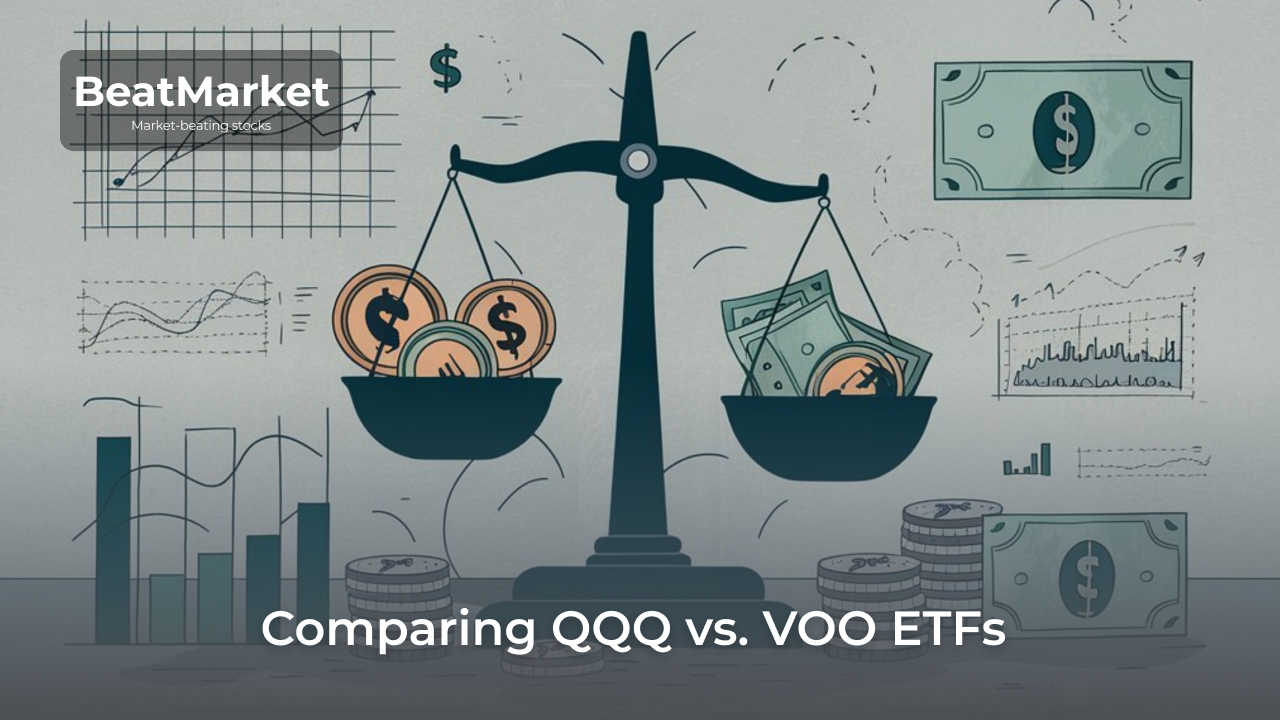Buying SPY and SPX options is a popular way to make money on the S&P 500 Index movements. Yet there are many differences between these financial instruments. The key ones are the underlying asset, the contract style and the tax treatment.
Table of Contents
What is the difference between SPY and SPX
The difference between SPY and SPX comes down to the fact that the former abbreviation refers to a security and the latter to a virtual value.
SPY is an independent asset that can be bought or sold on the stock exchange. Its ownership brings interest income. Trading SPX directly, unlike SPY, is not possible. However, it is an index, a theoretical number, rather than an object of transactions.
When comparing SPY vs SPX stocks of the companies that influence ETF quotes and the calculated index value are the same. The difference comes down to the nature of the instruments themselves.
What is SPY?
SPY is the SPDR S&P 500 Exchange Traded Fund ETF Trust ticker symbol, which can be used to find it in a trading platform.
SPY ETF is designed to track the S&P 500 stock index. This fund’s net assets include stocks of 500 publicly traded companies in a proportion that corresponds to their weight in the index.
By purchasing SPY, an investor may become a shareholder of all S&P 500 issuers. However, an investor will only have to pay ten times less than if he or she had tried to build such a portfolio on his or her own.
What is SPX
SPX is a theoretical number, the S&P 500 Index value based on the value of its constituent stocks.
The SPX value is the weighted average price of the stocks included in the index basket. Market capitalization of the company acts as a weighting. The SPX value dynamics is usually used to assess the efficiency of the US stock market.
What are Options
An option is a contract allowing its holder to make a certain transaction in the future at a fixed price. For example, sell 100 company N stocks at $250 per stock within 30 days.
Such a contract always has a limited duration and in order to buy it, a premium must be paid to the seller. If a person decides not to exercise the right provided by the option, he or she cannot recover its value.
The option is settled either in the underlying asset or in cash, depending on the option type. This allows trading contracts based on intangible objects like stock indexes.
Options come in 2 types:
- Call option. Gives the right to buy the underlying asset.
- Put option. Gives the opportunity to sell the underlying asset.
Buying a call option means betting on the quotations growth (“Bullish” position). Selling such a contract means betting on a fall in the price of the underlying asset (bearish position). The reverse is the case with a put option.
Options are also classified by the exercise date. They can be exercised for a week, a month, a quarter, a year.
Another important parameter is style. American style gives the right to make the specified transaction at any time before the expiry of the contract. European style options can only be exercised on the expiry date.
An option contract can be margined. This means that every day the profits of the seller and buyer of the option are recalculated depending on how the price of the underlying asset changes. In a non-margined option, the seller receives the premium immediately and the buyer waits for the profit to be credited until the time of exercise.
Trading options SPX vs. SPY
Since it is not possible to trade directly with SPX, when people talk about SPX vs SPY, they are usually referring to options trading. Both serve as a way to make money on the rise (or fall) of the S&P 500 Index. But there are a few key differences between the two.
What Are SPY Options?
The underlying asset of the SPY option is the stocks of the SPDR S&P 500 ETF Trust. It is these stocks that are used to settle the contract. The transaction can be executed at any time.
By buying a call option, an investor acquires the right to buy SPDR S&P 500 ETF Trust stocks at the strike price specified in the contract until a certain date. By buying a put option, a person gains the ability to sell the stocks he or she owns in the future.
Here is information about several SPY options with an expiration date of 16 August 2024.
S&P 500 SPDR (SPY)
OPTIONS PRICES for July 22th, 2024 Expiration 2024-08-16(m)
Calls
| Strike | Moneyness | Bid | Midpoint | Ask | Last | Change | % Chg | Volume | Open Int | OI Chg | Vol/OI | IV |
| 545.00 | +1.31% | 14.56 | 14.60 | 14.63 | 14.69 | +2.43 | +19.82% | 1,140 | 16,191 | +1,984 | 0.68243 | 15.25% |
| 546.00 | +1.12% | 13.81 | 13.84 | 13.87 | 13.68 | +2.12 | +18.34% | 85 | 1,934 | +191 | 0.66764 | 15.07% |
| 547.00 | +0.94% | 13.07 | 13.10 | 13.13 | 12.36 | +1.67 | +15.62% | 99 | 2,143 | +204 | 0.65221 | 14.88% |
| 548.00 | +0.76% | 12.35 | 12.38 | 12.40 | 11.77 | +1.75 | +17.47% | 122 | 3,808 | +373 | 0.63615 | 14.70% |
| 549.00 | +0.58% | 11.64 | 11.67 | 11.69 | 11.79 | +2.38 | +25.29% | 256 | 2,162 | +466 | 0.61947 | 14.52% |
Puts
| Strike | Moneyness | Bid | Midpoint | Ask | Last | Change | % Chg | Volume | Open Int | OI Chg | Vol/OI | IV |
| 545.00 | -1.31% | 4.01 | 4.02 | 4.03 | 3.97 | -2.23 | -35.97% | 2,645 | 33,105 | -1,150 | -0.30824 | 13.92% |
| 546.00 | -1.12% | 4.26 | 4.27 | 4.28 | 4.11 | -2.43 | -37.16% | 915 | 4,942 | +53 | -0.32472 | 13.77% |
| 547.00 | -0.94% | 4.53 | 4.54 | 4.55 | 4.37 | -2.51 | -36.48% | 281 | 20,005 | +123 | -0.34198 | 13.62% |
| 548.00 | -0.76% | 4.81 | 4.82 | 4.84 | 4.81 | -2.29 | -32.25% | 916 | 6,899 | -718 | -0.36024 | 13.48% |
| 549.00 | -0.58% | 5.11 | 5.13 | 5.14 | 5.10 | -2.55 | -33.33% | 368 | 4,756 | +82 | -0.37885 | 13.33% |
What Are SPX Options?
The SPX option is essentially a bet on the rise or fall of the S&P 500 Index. Such a contract has no tangible underlying asset. The settlement is only possible in cash.
An investor who buys a call option on SPX will profit once the S&P 500 exceeds the strike on the execution date. If the growth expectations do not come true, the index value will be less than specified in the contract, the execution of the latter can be canceled. If this happens, the person will record a loss in the amount of the premium paid when buying the SPX option.
The information below is for several SPX options with an expiry date of 16 August 2024.
S&P 500 Index ($SPX)
OPTIONS PRICES for July 22th, 2024 Expiration 2024-08-16(m)
Calls
| Strike | Moneyness | Bid | Midpoint | Ask | Last | Change | % Chg | Volume | Open Int | OI Chg | Vol/OI | IV |
| 5,520.00 | +0.77% | 111.70 | 112.40 | 113.10 | 103.10 | +19.10 | +22.74% | 28 | 653 | +30 | 0.64095 | 13.07% |
| 5,525.00 | +0.68% | 108.20 | 108.90 | 109.60 | 109.14 | +29.48 | +37.01% | 5 | 2,885 | +185 | 0.63164 | 12.99% |
| 5,530.00 | +0.59% | 105.20 | 105.45 | 105.70 | 89.90 | +12.50 | +16.15% | 200 | 6,693 | +5,950 | 0.62214 | 12.92% |
| 5,535.00 | +0.50% | 101.90 | 102.10 | 102.30 | 86.70 | -0.25 | -0.29% | 34 | 465 | +1 | 0.61239 | 12.86% |
| 5,540.00 | +0.41% | 98.50 | 98.80 | 99.10 | 86.31 | +8.01 | +10.23% | 249 | 1,118 | -33 | 0.60249 | 12.80% |
Puts
| Strike | Moneyness | Bid | Midpoint | Ask | Last | Change | % Chg | Volume | Open Int | OI Chg | Vol/OI | IV |
| 5,520.00 | -0.77% | 48.20 | 48.40 | 48.60 | 49.94 | -30.06 | -37.58% | 57 | 517 | +15 | -0.36883 | 13.06% |
| 5,525.00 | -0.68% | 49.70 | 49.90 | 50.10 | 48.73 | -33.07 | -40.43% | 93 | 3,848 | -55 | -0.37846 | 12.98% |
| 5,530.00 | -0.59% | 51.20 | 51.40 | 51.60 | 54.13 | -28.64 | -34.60% | 201 | 941 | +247 | -0.38848 | 12.90% |
| 5,535.00 | -0.50% | 52.80 | 53.00 | 53.20 | 54.64 | -27.26 | -33.28% | 107 | 397 | -11 | -0.39877 | 12.82% |
| 5,540.00 | -0.41% | 54.50 | 54.70 | 54.90 | 61.70 | -22.68 | -26.88% | 910 | 958 | +28 | -0.40923 | 12.75% |
Key Differences Between SPX and SPY options
Although both (SPX and SPY) are linked to the S&P 500 and reflect its dynamics, there are key differences between them. It is impossible to choose SPX vs SPY without understanding them.
Before you start trading options tied to the S&P 500, you should compare their type and execution rules. It is also worth considering that the SPX options track the underlying index a little more accurately. This is due to the fact that in the case of SPY, the yield is affected by the management company’s commission.
Paying Dividends
Traditionally, exchange traded derivatives do not offer passive income. The SPY option is one of the few exceptions. The mechanism of its operation allows you to receive dividends. It is only possible when the contract is executed in a timely manner.
Does SPY Pay a Dividend?
As previously mentioned, SPY is an exchange traded fund. Like most U.S. ETFs and mutual funds, SPY pays dividends to the holders of its stocks. This happens once a quarter.
For this dividend to be paid, the SPY call option buyer must exercise the call option before the ex-dividend date. Therefore, buying a put option instead of selling stocks already held by the investor will allow:
- to receive dividends on the assets they own;
- to fix a price at which they can dispose of their securities at a later date.
Does SPX Pay a Dividend?
SPX is an index ticker allowing users to find it on the stock exchange quotations broadcasting platforms. This abbreviation does not hide real assets that could bring dividends.
Therefore, trading SPX options does not generate any additional income other than the profit from exercising the contract.
Expiration & Settlement Dates
The differences between SPX and SPY options in terms of expiration are determined by their belonging to different styles.
Are SPX American or European?
SPX options are a European contract. For the investor it means the following:
- The decision to exercise an option can only be made on the last day of its existence.
- The only way to “close” your contract earlier is to make a reverse transaction. That is, once a person has bought an option, they will have to sell the same contract.
- In theory, there is a risk of facing a lack of liquidity and failing to find a buyer.
The European style has one more peculiarity. If an SPX option expires on the third Friday of the month, the last day to trade it is the preceding Thursday. The settlement price is fixed at trading opening. Price movements during Friday will no longer have an impact. To be precise, this is exactly the kind of option contract that is labeled SPX.
The SPXW ticker can also be found in the trading terminal. In this case, the expiration date of the SPX option is any day, and the option will expire at 4:00 p.m. Eastern Time. In this case, you should use the SPX ticker to study the market data. It allows you to view the entire chain of options available for this underlying asset.
Are SPY Options American or European?
SPY options are American style contracts. This means that their owner can exercise their right to deal in the stock on any day before the expiration date.
Whatever day the SPY option expires will not occur until 4:00 p.m. Eastern Time. The third Friday of the month exception does not apply for U.S. contracts.
Below is a table to help you better understand the expiration dates of SPY and SPX options.
| Options Chain | SPX | SPX | SPY |
| Ticker Symbol | SPX | SPXW | SPY |
| Am or PM Settlement | AM | PM | PM |
| Settlement Date | 3rd Friday | Mon., Tue., Wed., Th., Fri., 3rd Fri. and Last Trading Day of Month | Mon., Wed., Fri., 3rd Fri. and Last Trading Day of Month |
Risk of Early Assignment when using SPY
As mentioned above, American type contracts, to which the SPY option belongs, can be exercised on any day. In the average case, it is more profitable for the investor to sell the option. But a situation may arise when he or she wants to exercise his or her right to trade. And the lower the remaining time value of the option, the higher the probability that this will happen.
Thus, the seller of an SPY option must be ready for such a situation and consider the early assignment risk in his strategy.
SPY vs. SPX options settlement
Another key difference to consider when answering the SPX or SPY question is the method of settlement between the seller and buyer of the option.
The SPX options contracts are settled. This means that if the buyer is in-the-money at the time of expiration, cash will be credited to their account.
The SPY option is a put option. i.e. at the moment of its expiration there is a real movement of the underlying asset. For example, stocks owned by the seller of a call option become the buyer’s property. Or, on the contrary, the securities of the buyer of a put option are transferred to the seller of the contract.
Stocks in the SPY option payout are credited to the brokerage account on the day following the expiration date or the day of early exercise of the contract.
This involves additional inconvenience. An investor needs to make one more trade to lock in his profit from the SPY call option. He will have to sell the stocks that have been credited to him. This may involve the cost of additional brokerage commissions.
Besides, until the investor sells the stock, he continues to bear the risks associated with this position. In the case of trading SPX options, however, the profit is locked in at the time of expiration, and the risk associated with the transaction disappears at the same time.
When discussing SPY vs SPX stocks the first option entitles the investor to trade can only be a crucial argument if the investor is genuinely interested in buying/selling them.
If the goal is to profit from fluctuations in the S&P 500 index, the trader can sell their SPY option before the expiration date and thereby avoid having the securities credited to their account.
Flexibility & Notional Value
The SPY options are considered a more flexible financial instrument than the SPX options. This is due to the differences between American and European style contracts.
But an investor can offset this difference by simply selling the SPX options when he finds it to be profitable. He will most likely do the same with the SPY option, rather than demanding its expiration. The reason for this is that the contract has a time value. And the more time left until expiration, the higher it is.
When an investor sells his option, he will realize this time value. And when exercising, he will lose it.
SPX Vs SPY Actual Cost
The difference in face value between SPX and SPY options is one of the key differences for investors with small capital. If you take contracts with the same parameters (same strike price, expiration date, etc.), buying an SPY option will be about 10 times cheaper than the SPX options.
The reason for this is the nature of the SPDR S&P 500 ETF Trust exchange traded fund. The fair value of its stocks represents 10% of the value of the S&P 500.
A multiplier of 100 must be taken into account when calculating the trade volume to which the option entitles you to trade. A 1-point movement in the underlying index for an SPX option means a move of $100.
Suppose the value of the S&P 500 is 5564 points. In this case:
- market price of one SPY ETF stock will be slightly below $556.4;
- SPY option with the specified strike price gives the right to buy $55640 worth of SPY ETF stocks;
- SPX option is equivalent to a $556400 trade in the underlying asset.
The premium for buying an option also varies in the same way. But it is also affected by the option type and expiration date. The premium for buying an American option will usually be slightly higher. This is due to the fact that it can theoretically be exercised on any day, which means that the seller bears greater risks.
Liquidity of SPX and SPY Options
In a comparison of SPY vs SPX in terms of options liquidity, the winner is SPY. By trading it, an investor can expect a smaller spread between buy and sell orders and faster execution.
But when you compare SPX and SPY options not with each other, but with contracts on other underlying assets, it becomes obvious that they are both popular trading vehicles. They are among the top most liquid options on the market.
Types of Contracts
There are 2 types of contracts available for both instruments – call and put. By combining them, it is possible to implement option trading strategies of various degrees of complexity. This allows you to hedge your positions on the spot market and make money on index movements.
Differences in Tax Treatment
When compared, SPY vs SPX tax treatment is a good argument for picking a contract directly on the index rather than the fund’s ETF stocks.
All profits from the SPY option trade are considered short-term capital gains. SPX options are subject to favorable tax treatment as defined in Section 1256:
- 40% of an investor’s return is attributable to short-term capital gains;
- 60% relates to long-term capital gains.
The tax rate for long-term capital gains is noticeably lower than for short-term capital gains. Therefore, in general, when comparing SPX vs SPY, taxes make trading the latter more favorable.
Why is Implied Volatility Higher for SPY Options Than SPX?
The implied volatility (IV) for SPY options is generally higher than for SPX options. This is due to differences in contract types (American vs. European).
SPY to SPX conversion formula
When comparing SPY vs SPX, one cannot ignore the difference in option value. As mentioned above, the SPY price is roughly 10% of the S&P 500 index value.
The formulas for the SPX to SPY conversion and vice versa are as follows.
SPX = 10 х SPY; SPY = SPX/10
To convert SPY stock contracts into SPX options, one needs to multiply its value by 10, and in the reverse case, divide it by 10.
Bottom Line – Which options trading is best for you
To conclude the comparison of SPX vs SPY options, let’s summarize their main characteristics in the table below.
| SPX option | SPY option | |
| Trading Style | European option | American option |
| Dividends | No | Yes (subject to timely exercise of the option) |
| Settlements upon execution | Cash settled | Stock settled |
| Value | Approximately 10x the SPY of an option | Approximately 0.1 SPX of the option |
Each investor must decide individually which of these contracts is more suitable for him or her. Taking into account the differences listed above, trading SPY options will be more convenient for someone who:
- Is interested in the final stock transaction;
- is looking for the most liquid instrument;
- wants to choose the most favorable moment for execution rather than wait for expiration;
- prefers a less expensive contract (according to the formula for SPX to SPY conversion, the latter is about 10 times cheaper).
In other cases, a trade with SPX options will be preferred, trading which offers tax advantages.
FAQ
Is it better to trade SPX or SPY?
SPY or SPX options are financial instruments that reflect the dynamics of the S&P 500 index. The type of option to trade depends on the investor’s goals. It can be mentioned that the SPY option is more suitable for beginners because of its lower cost. And SPX options are for investors who find the SPY vs SPX tax treatment important in the SPY vs SPX comparison.
If an investor is interested in buying a real asset, however, their only choice is SPY ETF stocks.
What is the difference between SPY and S&P 500 index?
S&P 500 is a stock market index, not a security. Its value is a theoretical value calculated according to certain rules. SPY is the ticker symbol of an exchange traded fund that invests in companies included in the index basket for calculating the S&P 500.
SPY stocks can be bought and sold on the stock market. It is not possible to make transactions directly with the index. This requires the use of derivative instruments – futures and options.
Why is SP500 called SPY?
SPY is the ticker symbol of the most popular ETF that replicates the S&P 500 Index. Except for a small margin of error, SPY quotes change at the same rate as the underlying index. Therefore, the phrases “invest in SPY” and “invest in the S&P 500” are sometimes used synonymously.
Is SPY a good indicator?
The S&P 500 Index includes the 500 largest US companies by market capitalization. Therefore, it can be considered the main indicator of the state of the country’s economy and stock market.







